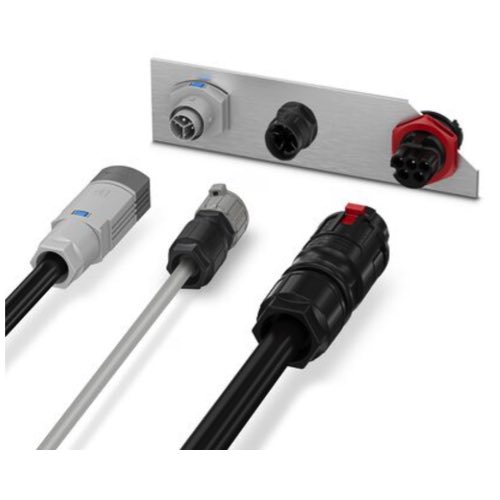Installation Connectors

Installation connectors simplify and secure the connections of both electrical wires and cables in numerous applications in industrial environments. They are specifically designed to provide easy installation using efficient and safe electrical connections, and they are used just about everywhere.
Various types and designs exist for installation connectors, such as push-in wire connectors, wire nuts, lever connectors, and terminal blocks. The installation process for a push-in wire connector is simple: push the stripped wire into the connector. Push-in wire connectors enable quick, easy, and secure installations. A wire nut offers nearly the same installation advantages but is not as secure as a push-in connector. Still, a wire nut beats a crimp connector in terms of installation ease, connection security, and cost.
More Information about Installation Connectors
Aside from their main task of connecting wires, installation connectors also insulate and protect against electrical shorts and environmental hazards. Within electrical boxes and enclosures, they are instrumental in organizing and managing the really wiring jobs that some of us sometimes have to do. And with their seemingly very robust and versatile nature, installation connectors are something that you will always find in the toolbox of a journeyman or master electrician.
FAQs
What is the best solution for connecting components in an electronics system that is less time consuming and provides a high degree of reliable connections?
The best solution for connecting components in an electronics system that is less time-consuming and provides a high degree of reliable connections is using push-in wire connectors or lever connectors, which ensure quick, secure, and tool-free connections.
What product family of connectors provides flexible solutions for audio signals in an indoor setting?
The XLR connector product family provides flexible solutions for audio signals in an indoor setting, offering reliable and secure connections commonly used in professional audio equipment.
Serial Communication Basics
In telecommunications, the process of sending data sequentially over a computer bus or communication cable is known as serial communication. Serial communication transmits data one bit at a time. Parallel communication transmits bits simultaneously over multiple communication lines in a single bus or cable. While it may seem that parallel communication would be the preferred method, this is not true in many situations.
Because of the increased complexity and data transmission, serial communication has faster speeds than parallel communication. The speed at which serial is communicated can be altered by adjusting what is known as the BOD rate, which simply increases the number of the bits that can be transmitted per second. This is one of the reasons serial communication methods have remained such a common method for basic communication in much of computer based hardware used today.
Some of the most common standards that have been created to take advantage of serial based communication in the industrial space would be RS 232 and RS 485. The earlier RS 232 standard was very common in computing in many different industrial, commercial and residential applications. It had lower transmission speeds, short maximum cable lengths and large voltage swings, making it useful only in certain situations. RS 485 is an improved standard that is still found in many of the same applications today. It resolved many of the issues the earlier RS 232 standard had by allowing longer cable lengths, higher transmission speeds and other improvements that increased its usability and performance.

